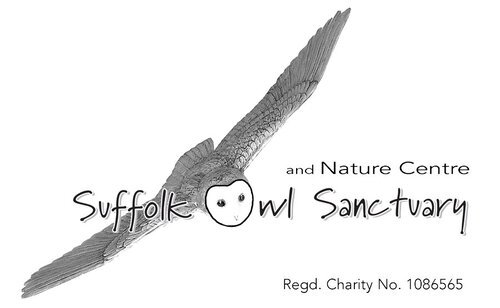At S.O.S. we're not only committed to our various schemes which focus on the care & conservation of wild owls & other birds of prey - we're also immersed in the education of the next generation of wildlife guardians through its work with local schools and colleges and offer a wide range of educational activities designed to inspire children of all ages to investigate wildlife in general and conservation questions in particular.
To this end, falconers are happy to travel out to regional schools with a variety of birds, presenting children with their first opportunity to experience an owl or other bird of prey at close quarters.
Alternatively, school parties are welcomed into the sanctuary to spend a day amongst the falconers and birds, discovering answers to all the Why?/ What?/ When? questions posed by the natural world and an owl’s place within it.
This week, one of our local schools paid such a visit…..and had a surprise in store for the falconers! In the weeks preceding their visit, the whole school had explored the value of “Service”. Willow Class had decided to demonstrate their understanding of "service to a charity" by working extremely hard with their teacher to raise funds for their chosen cause.
The enterprising children from a local school met Aukland, the Boobook Owl during their recent visit - despite the terrible weather
(and the ever-present danger of falconer Dean showing his knees)
everyone seemed to have a good time!
Having dreamt up some inventive ways to raise money, the whole class had indulged in a Chocolate Bingo session and suffered the agonies of a Sponsored Silence! As a direct consequence, the birds currently in the care S.O.S. became the lucky recipients of their generosity and a large donation cheque was presented to Auckland, the Boobook Owl and Dean the falconer.
The school spent the rest of the VERY wet day meeting the birds in the flying team and learning about the important role owls play in our domestic ecosystem, as indicators of the health of our countryside. Owls and other birds of prey from other parts of the world were also introduced and the day to day work of the sanctuary and its hospital facilities explained. The adoption team was very popular and the children elected to adopt three birds on their visit - Lily the Little Owl, Bug the Tawny Owl and Odin, the Peregrine Falcon.
ITMA (ask your grandad) - Dean and Aukland together accept a very generous donation raised through the extra-ordinary efforts of a class from a local school. Thank you, guys - you did us proud!!
Despite the awful weather, our resident family of meerkats did not fail to entertain, and a close look at the red squirrels was also a “first” for many children, but sadly, torrential rain necessitated an early retreat back to school, but all the staff and birds at the sanctuary look forward to welcoming Willow Class back to the centre on a drier, more comfortable day!!
Meanwhile we would like to thank the school once again for the very generous donation and all the hard work,organisation and planning that the enthusiastic of these enthusiastic schoolchildren necessitated.






















































